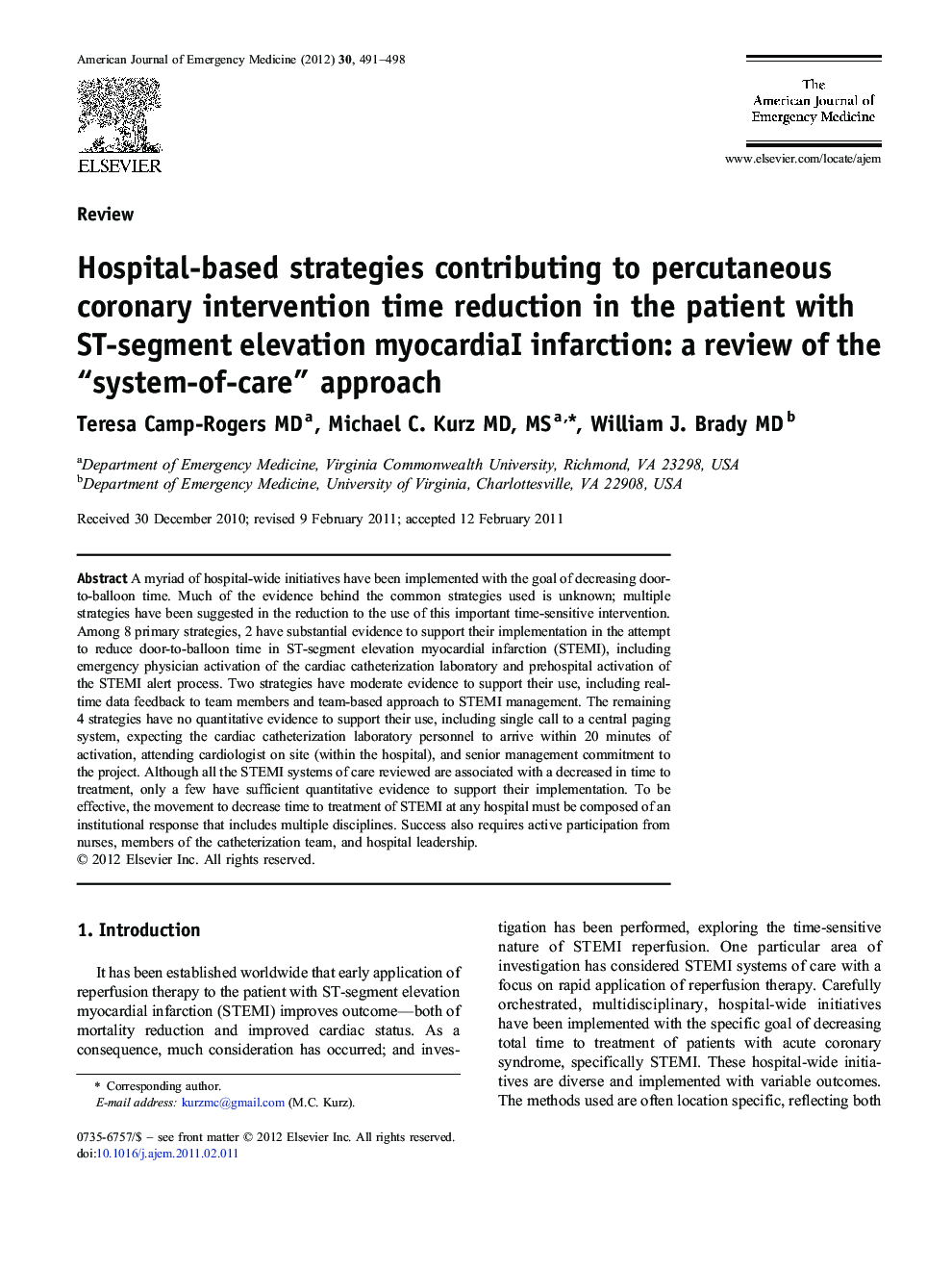| کد مقاله | کد نشریه | سال انتشار | مقاله انگلیسی | نسخه تمام متن |
|---|---|---|---|---|
| 3225636 | 1588141 | 2012 | 8 صفحه PDF | دانلود رایگان |

A myriad of hospital-wide initiatives have been implemented with the goal of decreasing door-to-balloon time. Much of the evidence behind the common strategies used is unknown; multiple strategies have been suggested in the reduction to the use of this important time-sensitive intervention. Among 8 primary strategies, 2 have substantial evidence to support their implementation in the attempt to reduce door-to-balloon time in ST-segment elevation myocardial infarction (STEMI), including emergency physician activation of the cardiac catheterization laboratory and prehospital activation of the STEMI alert process. Two strategies have moderate evidence to support their use, including real-time data feedback to team members and team-based approach to STEMI management. The remaining 4 strategies have no quantitative evidence to support their use, including single call to a central paging system, expecting the cardiac catheterization laboratory personnel to arrive within 20 minutes of activation, attending cardiologist on site (within the hospital), and senior management commitment to the project. Although all the STEMI systems of care reviewed are associated with a decreased in time to treatment, only a few have sufficient quantitative evidence to support their implementation. To be effective, the movement to decrease time to treatment of STEMI at any hospital must be composed of an institutional response that includes multiple disciplines. Success also requires active participation from nurses, members of the catheterization team, and hospital leadership.
Journal: The American Journal of Emergency Medicine - Volume 30, Issue 3, March 2012, Pages 491–498